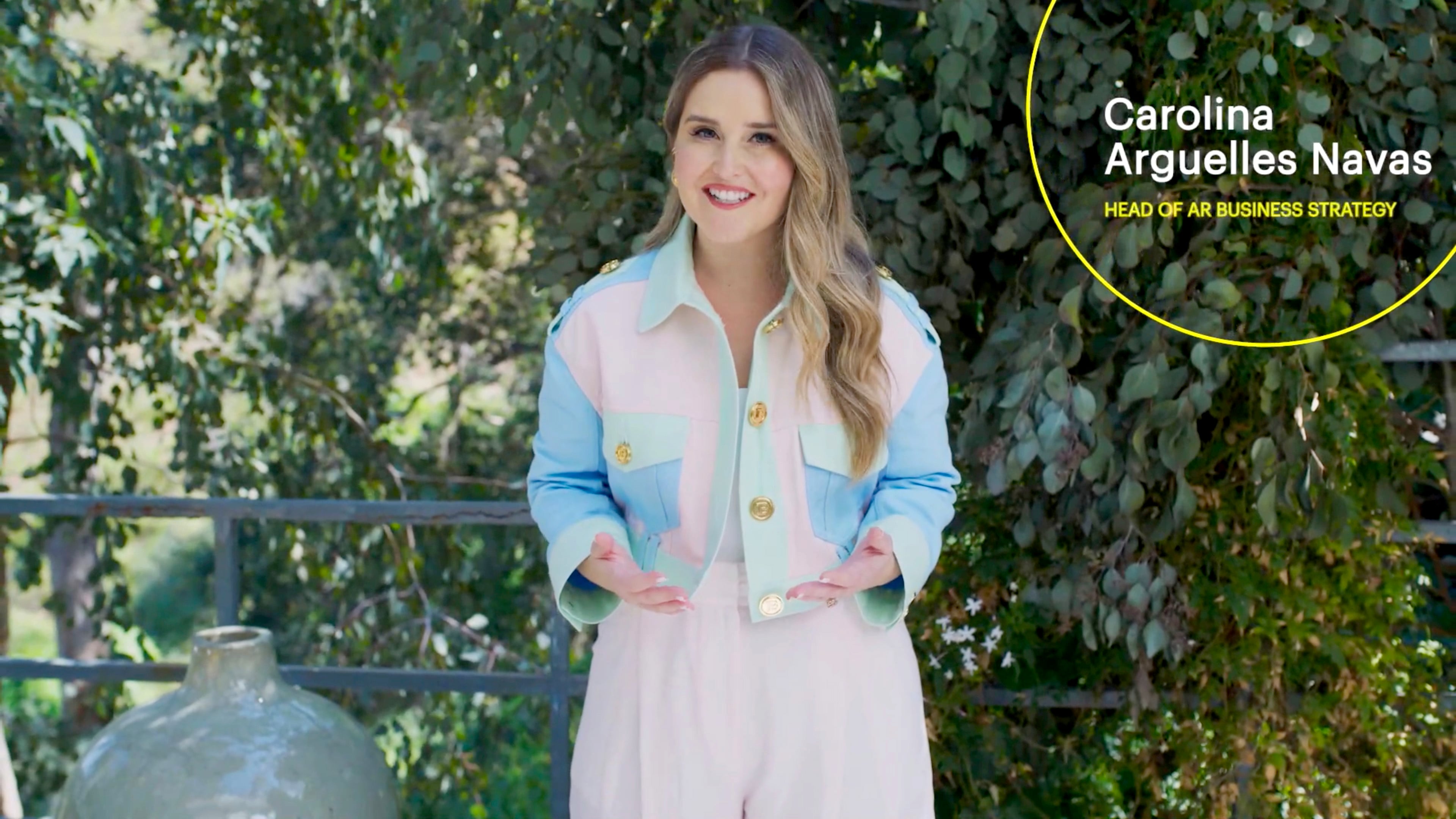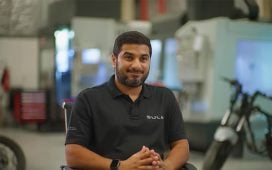
Yesterday (April 28, 2022), Snap Inc held its annual Snap Partner Summit (SPS).
Among the many announcements made at the streamed event were next-generation Spectacles with hand-tracking software; a new version of Lens Studio; remote storage of large AR developer assets; a new Director mode; and a pocket-sized drone called Pixy.
Campaign caught up, via video call, with Carolina Arguelles Navas, Snap’s head of AR business strategy, who gave a keynote speech at the event about augmented reality (AR) shopping. She discussed what had been announced and what is coming.
Navas says that shopping is important to Snap. “We’re really focused on commerce,” she tells Campaign. “The reason why we are is because not only does it play a really big part in everybody’s daily life, but we believe that there’s a lot of friction in commerce that the camera is uniquely posed to solve.” She promises that there will be a “renewed kind of focus” on commerce thought the year.
Since January 2021, more than 250 million Snapchat users have engaged with AR shopping Lenses more than 5 billion times, says Snap. Lenses allow them to try on and visualise products from brands and retailers worldwide.
Snap has been doubling down on its camera in recent years, identifying itself as a camera company, and is particularly focused on AR.
Some of that technology has its roots in Ukraine, a fact that added an air of authentic connection often lacking in ‘pray for the less fortunate’ speeches when Snap Inc’s CEO, Evan Spiegel spoke about the ongoing war.
“Today we’re dedicating our Snap Partner Summit to our team members in Ukraine,” he told his virtual audience. “Ukraine is the birthplace of Looksery, the company that laid the foundation of our augmented reality platform.”
He continued: “The products and services we are sharing with you today would not be possible without the creativity and ingenuity of our Ukrainian team members, and our hearts have been broken by the war that has taken so many innocent lives. We pray for peace in Ukraine.”
Navas identifies three broad themes of the announcements made at the SPS: launching enhanced technologies; more content; and discovery.
The enhanced technology includes ray tracing, which reduces the unnatural, ‘Uncanny Valley’ effect of light appearing to reflect off rendered objects in an unrealistic way.
“Ray tracing actually affects the lighting, the shadows and the reflections that you see in the camera,” says Navas. “It is usually a technology used for things like gaming or film, that you use massive computers to process. So, our ability to bring it to mobile devices is going to be a game changer in terms of realism for things like jewellery [ Tiffany & Co is already using it to render realistic pieces, and a brooch from that brand was showcased during the keynote], or the hardware that you see on bags, or the reflections in a pair of sunglasses. It’s not just the realism of the object; it’s actually the way that object interacts with the world that makes it look real or fake.”
Other pieces of technology include improvements in body tracking, world tracking and world scale. “That means that when things are overlaid on your body there’s more precise tracking,” says Navas. “It means that when you’re looking at things in the world, they are accurate to scale. So, if you’re looking at a $1,200 bag you know if it’s this big [small] or this big [large], and that’s a really important difference to know.”
These advances will have practical repercussions for marketers. “This sort of technology solves consumer confidence when buying,” says Navas. “By increasing customer confidence, you really can drive more conversions. And, more importantly for the business, you are lowering returns. And that’s a really important thing.”
The second take-away from SPS, says Navas, is around content. New tools will allow retailers to use the 2D catalogue images they already have to create 3D rendered versions of the items they sell. “We’re going to go from an eight-to-12-week creation period down to minutes,” says Navas.
She adds: “We take just a photograph from a retailer that they already have on their e-commerce site and turn that into an asset that can be used directly in a trial experience. Removing the need to create a 3D model entirely is kind of a game-changer for verticals like apparel.”
In terms of discovery, Snap is introducing a ‘Dress Up’ tab. Navas explains: “It’s that hub where Snapchatters will know where to come back to, to find all that content. For businesses, all they have to do is create the experience and post it for free to their organic public profile on Snap. We will automatically surface it in that tab.”
Another free service that Snap is rolling out is Camera Kit for Shopping. This will allow brands to use Snap’s AR to create try-on experiences within brands’ own apps, and eventually on their websites as well. They won’t have to direct their customers to Snapchat.
Navas doesn’t see it as helping brands compete with the app, though. “It’s about our ability to help power cameras everywhere, because we believe that the camera is the next computing interface that we really want to help give more people the tools to be able to build more AR,” she says. “It is the opportunity to really help improve our lives in so many different ways.”
AR in retail isn’t only about online experiences. “I think a lot of people do believe AR and virtual try-on is just about the at-home experience; that is totally not true,” says Navas. “AR is so powerful in the in-store experience as well.” She gives the example of beauty products, where post-Covid, people might be reluctant to try on the same physical samples that other shoppers have touched, but still want to go to a store where “seeing the packaging and having an associate help you is really important to the beauty-buying process”.
“The store isn’t going anywhere,” she says. She gives other examples, of Nike and Roblox partnering for a store in New York, where they installed an AR ‘mirror’. And with recently rolled-out Location Cloud Services, stores can be made interactive with the Snap app in ways that weren’t available before. “The in-store experience is actually ripe for innovation with AR,” says Navas. “We’re really excited about that opportunity as well.”
When pushed on what she’s looking forward to seeing announced in future iterations of the SPS, Navas says: “What I’m excited about over the next few years is seeing how many different types of partners are thinking about really innovative applications for AR for very specific things that we would never think about at Snap.”
She says: “We’re not trying to invent all use cases; we want to invent the tools.”









